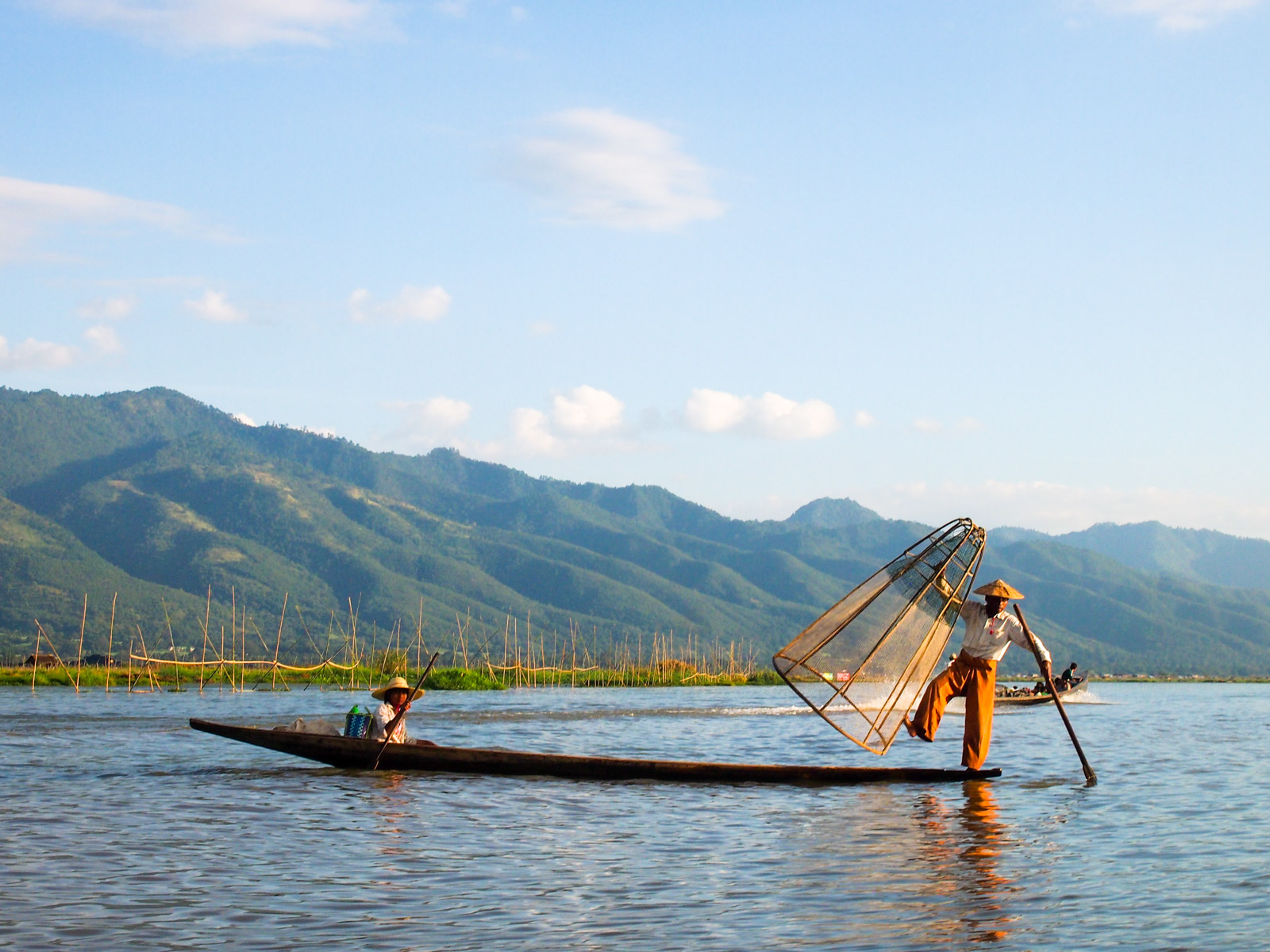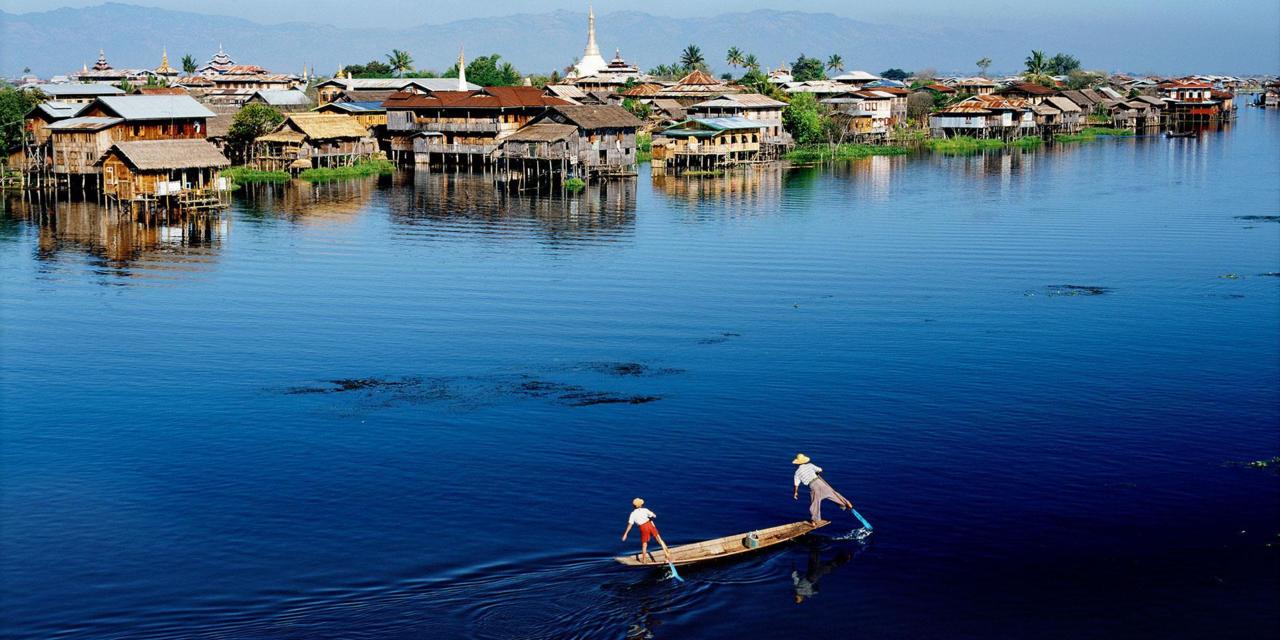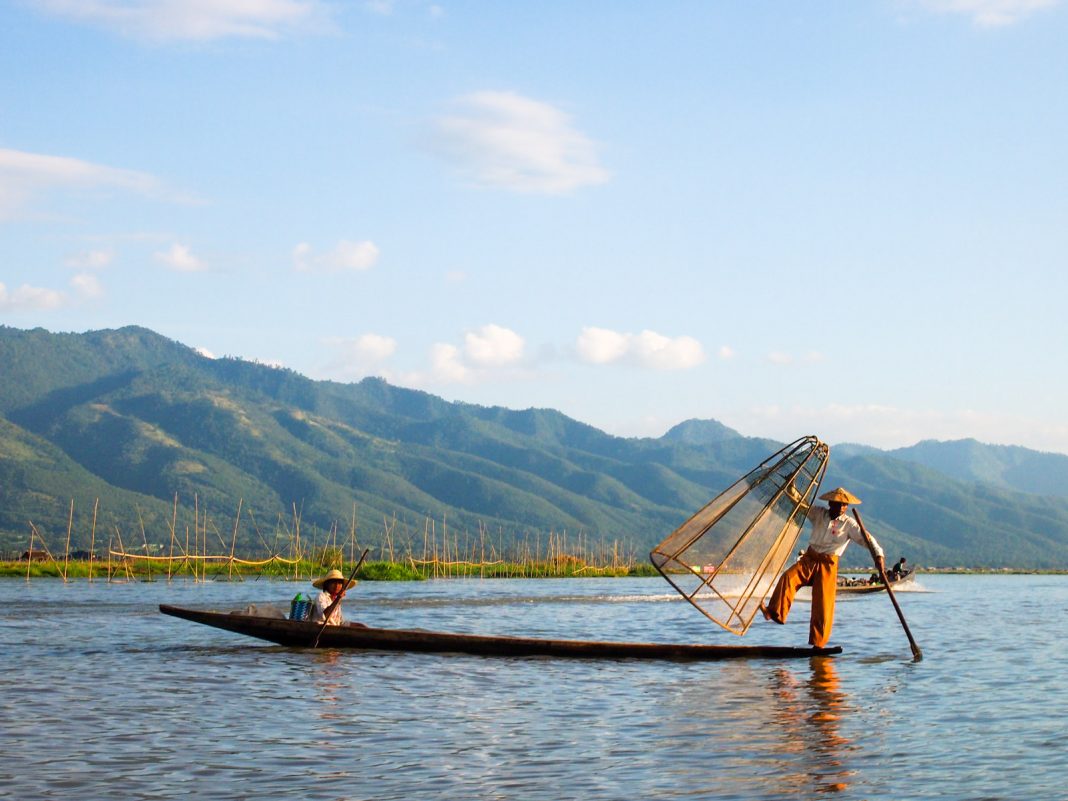
When the United Nations Educational, Scientific, and Cultural Organization (UNESCO) in June 2015 designated Inle Lake as Myanmar’s first Biosphere Reserve under the framework of UNESCO’s Man and the Biosphere Programme (MAB), which is an Intergovernmental Scientific Programme that aims to establish a scientific basis for the improvement of relationships between people and their environments, hopes were high that at long last its decades-long gradual degradation could now be reversed and the conservation of this freshwater lake will now be able to revive to its original natural form.
But three years on, despite coordinated approach between the Government of Myanmar, United Nations Development Programme (UNDP), UNESCO, other UN agencies and organizations, including extensive consultations with and participation of community-based organizations, academia, youth groups and the private sector, hasn’t been able to stem the tide of the lake’s degradation, according the various media reports.
Background
Nestled in the middle of Shan plateau, Inle Lake is one of the world’s Global 200 ecoregions and a freshwater biodiversity hotspot and the top 10 most popular tourism destinations in Myanmar.
The lake formed 1.5 million years ago is the second largest lake in Myanmar after Indawgyi. It is also a major source of hydro-power for southern Myanmar. The remnant elongated lake is aligned on a north-south axis, which is mainly fed by four perennial streams located on the north and the west, namely: Nam Lat, Nei Gyar (Yay Pei), Kalaw (Thann Daung) and Bilu (Indein), in addition to the 29 major streams flowing into the Lake.
All streams on the east side are all seasonal. The eastern part of the basin accounts for only 10%, while the western part comprises 53% and the northern part constitutes 37% of the catchment area, according to the report “Long Term Restoration and Conservation Plan For Inle Lake”, published by Ministry of Environmental Conservation and Forestry (MOECAF) in July 2014.
The diverse fauna that inhabit the lake and its surrounding include species that are listed as critically endangered, vulnerable, or nearly threatened by the International Union for Conservation of Nature (IUCN). Besides, the lake is facing human induced degradation and the size of the wetland has been dramatically reduced over the past few decades. The increasing rate of lake degradation has increased the livelihood vulnerability of communities living in or near it, according to the report titled: “A Multi-dimensional Assessment of Ecosystems and Ecosystem Services at Inle Lake, Myanmar,” published by International Centre for Integrated Mountain Development in 2017.
The lake area has decreased significantly by nearly 40% during the period of 1934 to 2007, according to the Land Records and Settlement Department (2007).
Even then it remains a major tourist attraction promoted by the government as part of the ecotourism since 1996, receiving a large number of visitors from different parts of Myanmar and the world.
Inle Lake is located in Nyaungshwe Township, Taunggyi District in Shan State. The Inle Lake wetlands ecosystem is home to 267 species of birds, of which 82 are wetland birds, 43 species of freshwater fish, otters and turtles.
The population of Inle Lake consists predominantly of Innthar, with a mixture of Shan, Taungyo, Pa-O (Taungthu), Danu, Kayah, Danaw and Bamar ethnicities.
Present situation
The dire contemporary situation of the lake is adequately listed by the UNDP publication of 2015 titled, “Inle Lake Conservation and Rehabilitation” as below:
- The lake area has decreased significantly – from 271 km2 in 1934 to 163.2 km2 in 2007. Only 62.2 km2 remains open source area.
- In some places the lake is only canals between floating gardens or farm plots.
- Water is polluted, poisoning fish. The lake’s natural filtration system may have worked in the past, but the pollution is now too severe.
- People who drink water from the lake and eat its fish face severe health risks. High rates of diarrhoea and dysentery are reported in the downstream communities.
- Invasive species are fast breeding endangering the once-abundant native flora and fauna and degrading people’s livelihoods.
Why this has happened is pinpointed as follows:
- Considerable overuse of chemical fertilizers and pesticides
- Population growth has also had ill effects
- Increased utilization of fuel wood around the lake for cooking and cottage industries
- Rapid tourism development with nearly 100,000-150,000 visitors heading to Inle Lake every year
- Climate change – Analysis of climate data reveals the length of the monsoon period has decreased by as much as 10 days over the last 30 years

Media reports
The Myanmar Times report of August 2 in its “The Alarm Bell for Inle Lake,” in Burmese language bemoaned the ecological disaster of the lake pollution due to the excessive used of fertilizers and pesticides, endangering of local fish species and deforestation of the lake surroundings that have led to the overall degradation of the lake.
The population of Inle Lake are not happy with the coverage of Beida (water hyacinth) plants according to the report. The reason is explained by U Sein Htun, administrator of wild life sanctuary, as: “The increased water hyacinth means that the lake water is polluted.”
According to him the negative ecological change has affected the living beings around the lake and now the people have to buy drinking freshwater and cannot even drink the water from the lake like they have done before, as it is now polluted. It is like having a boat ride but cannot drink the water underneath, he said.
Again, a grim report filed by The Irish Times on May 17, by Stephen Starr in his “Myanmar’s Inle Lake: an ecosystem fighting to survive” pointed out that chemicals, silt and climate change are threatening fish species and the population’s way of life.
“A fivefold increase of floating gardens over the last 30 years (to 7,200 acres) and subsequent overuse of chemical fertiliser and pesticides has had a deteriorating impact on water quality and fish stocks,” says Joern Kristensen, founder of the Myanmar Institute for Integrated Development, a non-profit body. He says the harvesting of aquatic plants used as mulch on floating gardens has changed the lake’s ecosystem.
However, a more troubling precedent is the “dramatic increase” in the use of imported and unregulated chemical fertiliser and pesticides, some of which are extremely poisonous to human and animal life. “According to our survey in 2012, Cypermethrin, an extremely poisonous chemical (insecticide) was applied at 1,500 per cent of the recommended rate while Metalaxyl (a fungicide) was applied at 5,900 per cent of the recommended rate,” says Kristensen, according to The Irish Times’ report.
Deforestation and climate change
No doubt the shrinking of Inle Lake is due to the deforestation and climate change.
Germanwatch, a Bonn-based NGO, ranked Myanmar among the three countries worst-affected by weather events (along with Haiti and Honduras) between 1997 and 2016, according to The Irish Times.
And adding to it is the man-made disaster of deforestation through slash and burn agriculture practice, cutting tress for household and cottage industries usage and draining wetland for agricultural purpose surrounding the lake areas, which have for centuries serves as a water reservoir sponge, releasing water into Inle Lake gradually, according to the recent report of August 5, in Radio Free Asia.
No wonder the original lake area has shrink nearly 40% in a little more than 80 years.

Government’s undertaking
The government newspaper Global New Light of Myanmar of March 01, 2018, in its article: “ Long-term restoration and sustainability of Inle Lake,” confirmed that the government is drawing up long-term action plans in order to preserve Inle Lake. The Ministry of Natural Resources and Environmental Conservation has laid down plans to conserve Inle Lake because it is the main water supplier for the Lawpita hydropower dam.
It also acknowledged that the decrease in the lake’s size is not only due to low rainfall but also because of a build-up of sediment, with an estimated 310,000 metric tons of silt entering the lake each year from 29 creeks flowing through the watershed area.
The government’s holistic plan for the conservation and management of Inlet Lake are to be long-term and ongoing processes, which would be an integrated approach focusing on biodiversity conservation, integrity of the lake environment and improvement of the livelihoods of local communities, according to the article.
Financially, the government has committed €34 million to the conservation and development of the lake, while research and training efforts part-funded by the European Union, the government of Norway and others have been launched. Recent months have seen politicians working to draw up a new conservation law for the lake. On the ground, local experts say a €7.50 fee charged to foreigners upon entering the lake area is put towards embanking and dredging silt from surrounding canals, according The Irish Times.
Outlook
It is hoped that the optimistic attitude of Saw Doh Wah of UNPD still prevail, when he said some three years ago: “Inscription of Inle Lake into the UNESCO list of MAB Reserves represents a concrete example of people working together towards tackling environmental issues in Myanmar.” Adding: “It sets the stage for improved environmental governance related to Inle Lake conservation and provides the basis for future management and technical support.,” according to the UNDP publication of 2015.
No one could really pinpoint the shortcomings in a bid to restore equilibrium of the lake. But the MOECAF report of July 2014, which pointed out the flaws in the implementation might still be the case.
The report wrote: “While the Plan {Action Plan (2010 – 2015) for Environmental Conservation and Sustainable Management of Inle Lake} identified the major areas requiring initiatives, it fell short in detailing the underlying inputs and innovations. Besides, there was no institutional mechanism to monitor and generate important data that could serve as useful tools for effective implementation. As a consequence, even though a large number of UN agencies, NGOs and INGOs had been operating on several internationally funded programs, little was achieved to arrest the rate of degradation of the Lake, because of the fragmented approach.
But for now, it seems the conservation and rehabilitation schemes of Inle Lake are running out of time, especially if ground reports situation of endangered aquatic species, including both aquatic plant and aquatic animal species, could not be reversed soon enough.
Hopefully, a new conservation law for the lake could be drawn up by the lawmakers and specifically aimed undertakings to alter the lake’s degradation trend could be implemented as soon as possible.




